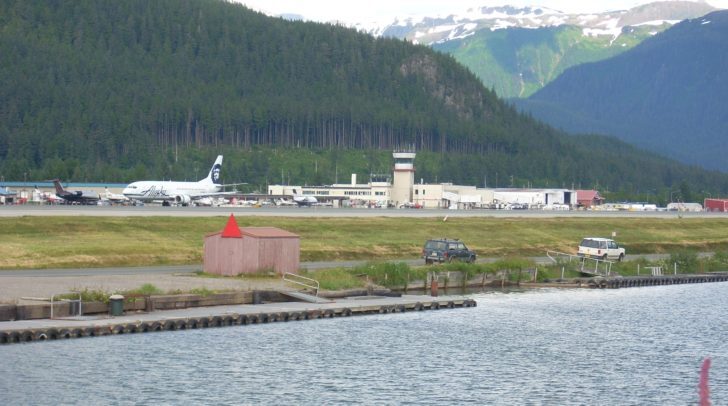By Sarah Fritts

Avionics give us an incredible amount of situational awareness. Onboard weather radar can help us dodge thunderstorms. We can obtain the latest METARs for airports while we fly. Traffic advisory systems help us spot and avoid other aircraft. Then there’s the incredible advantages of GPS. Despite all these amazing new technological advances, pilots must understand the limitations of technology.
I want to focus on the limitations of the traffic advisory systems. One of the most dangerous and catastrophic types of aviation accidents is a midair collision. It never ends well. Of any advanced avionics I would install on an aircraft, a traffic advisory system would take priority. It has helped me more than a few times to avoid a small aircraft. However, this system is flawed and unless you understand the flaw, you could expose yourself to a midair collision.
To illustrate the point, let’s examine a near-miss accident in Juneau, Alaska, between a small aircraft and an Alaska Airlines 737. I hope this incident will help you internalize the flaws of all TCAS systems (whether built into the aircraft or piped in from a Stratus to ForeFlight).
As a 737 descended into Juneau it came within 100 feet of a Piper Cherokee. The 737 was on a straight-in approach to Runway 26. At the same time, the Cherokee turned base and descended to land. The first officer saw the aircraft out of the corner of his eye and increased the rate of descent to avoid a collision, and then executed a missed approach. The Alaska Airlines aircraft never got a resolution advisory alerting them to traffic. The tower gave no warning. The Cherokee pilot had no idea what happened.
How did this happen at a towered airport? Why didn’t the 737’s TCAS system give the pilots a resolution advisory telling them of an impending collision? If you know about TCAS and transponders, the answer is obvious. But if you are unaware of the flaws in TCAS systems, then this incident will come as a surprise.
According to the incident report, four things contributed to this near miss:
- Traffic advisory systems do NOT show aircraft with no transponder. They are useless in this situation.
- A tower like Juneau can’t track aircraft without transponders. The tower had no primary radar that would have seen the Cherokee.
- The Cherokee pilot completely lost situational awareness. He never acknowledged the tower’s instruction to follow the 737. He never saw it.
- The angle of the sun and the dawn haze prevented the tower from keeping an eye on the Cherokee.

What can we take away from this incident? Traffic advisory systems will not show you aircraft without transponders. Do you fly with a Stratus or other device that ties into your onboard moving map (like ForeFlight)? Did you know you aren’t seeing the most dangerous aircraft? You can’t rely on the tower to provide avoidance advisories for all traffic if they can’t see airplanes not equipped with transponders. Many of you know this from personal experience. Traffic avoidance is always your responsibility, even when you are in towered airspace. Remember, not all towered airports have surface radar. The controllers rely on their own eyes.
A combination of the Cherokee pilot losing situational awareness and not informing the tower of his inability to see the 737, and the tower’s loss of eyes on the Cherokee contributed to this near mid-air. A 737 on short final wouldn’t have recovered from a midair collision. A transponder has become a vital piece of safety equipment, despite the fact that some pilots still fly without one. In the meantime, pilots need to understand the flaws of the technology they rely on. You must still keep your head on a swivel.
Sarah Fritts has been involved in the aviation community more than 20 years. She has accumulated almost 2000 hours about half of which are in helicopters and half in multi-engine airplanes. She is a West Point graduate and combat veteran with over 15 years leading and managing Army aviation soldiers. She flew the OH-58D helicopter during the invasion of Iraq in 2003 and flew a C-12 in Afghanistan in 2013. She has the Combat Action Badge for getting shot up, an Air Medal with “Valor” for actions during the invasion among other military flying awards and decorations. She currently flies for a Regional Airline as well as the National Guard. Her website is www.thinkaviation.net.
